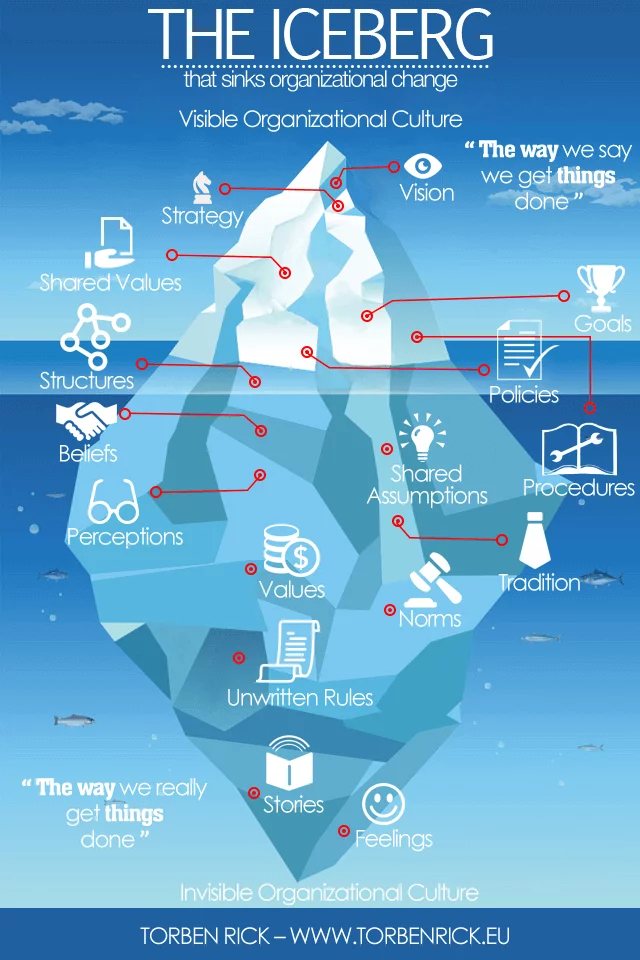
Change control is a formal process which involves management of uncertain outcomes. This is inevitable in a fast-moving business world, where it’s difficult to accurately predict the consequences of your change management approach.
Managing change is essential to ensure your project is progressing in the right direction. If you introduce new processes with no way of measuring impact, how will you know whether they’re having their intended effect?
Source image: torbenrick
With the right change control process in place, your company can work from a methodology which introduces monitors and safeguards.
Change control management enables teams to adjust the scope of their project within defined norms. They can do so using specific controls and policies, with an appreciation for the flexible nature of change.
Conventional wisdom suggests that in order to change our behaviours and habits, we need lots of willpower. But new thinking suggests that, as a principle for change, willpower is seriously overrated https://t.co/kcbCdi8zUH Via @AdamMGrant
— Helen Bevan (@helenbevan) January 22, 2018
Change concerns anything that can impact your project, including things like budget, scope, and time. Change can be sharpened further with tools and techniques, which staff can benefit extensively from.
To ensure change control management is executed properly, you should follow a process like the one outlined below:
Define Your Change Request
When you acknowledge a need for change, you’ll identify where you can benefit from making an adjustment.
You can consolidate your judgment with a change request, a simple procedure for requesting change. It helps when the person responsible for the request makes a firm case for change, and is a strong advocate of transformation.
They should be competent enough to explain their proposed change to other stakeholders, alongside being capable of using the right documentation to push things through.
Documentation could be in the form of a simple email, or could be as advanced as a complex report. It differs depending on the magnitude of the change in question.
Your request, which must clearly outline the change item for analysis, should include the following supporting statements:
Reasoning
Why are you suggesting this change, and how will customers be affected if the request isn’t embraced and initiated?
Conditions
Customers must be capable of defining what they expect from change. Though this might differ from your intentions, this is a crucial step for aligning expectations.
Completion Date
Provide a due date for change. Though it’s impossible to predict exactly, you can offer a projected timeline which can be analyzed at a later date.
What Value Can You Expect?
Explain why the request is needed, and how people will be set to benefit.
Submit and Review
Once documented, your change request should be submitted to the relevant project team. It will then be reviewed through the correct means. For small processes, businesses might contact staff through basic means like email.
Otherwise, it’s beneficial to organize your team and discuss change in more detail. Staff will feel like they’re a part of something, can contribute valuable feedback, and will feel a sense of togetherness and value.
You can unite your team further with fun games and activities!
Offer solutions to proposed concerns, and answer questions as appropriate. The review process will occur through a formal presentation/meeting, followed by a feedback/discussion session.
Once staff are up-to-speed with the change, you should create an open dialogue which explains the ramifications for customers. This allows you to set clear expectations, from which customers can get to grips with the proposed change.
Define Options – How Will You Respond?
Once you and your team have analyzed the change request, it’s time to set some parameters. You should define at least two options, while importantly acknowledging there’s more than one way to skin a cat.
Once you’ve established different routes to a prospectively successful outcome, you should document your response. To help you make a beneficial decision, you should consider your team’s view of the best choice.
Your response should be forged based on some of the data points outlined below. Though it might not align with your customer’s original perception, it should be used to help them make a purchasing decision.
Solution
How will you respond to the request, and why are you taking this approach? It helps to provide direction and justification.
Timeline
Both your team and target audience should understand the timeline to change. You should outline how long you expect change to take, and understand how this information will be leveraged by customers.
Impact
Most changes will generate significant impact, though some won’t. The scope will impact your project in various ways, including budgeting, timeline, quality, and resources.
Explain cost implications, while allocating and delegating staff based on current demand. Clearly define the impact of your project, to consequently influence customer decisions.
Expiration Date
Set a timeline for your client to respond. If they extend this window there could be additional impacts to consider. Setting an expiration date will provide a sense of urgency, with expectations for project completion.
Final Decision / Approval
This stage offers some finality regarding your change control management. If your project is met with widespread approval on a customer and staff level, you can proceed with your change initiative.
The change must be sustainable, and if it seems beyond the realm of possibility, this should be acknowledged. What’s most important is you establish open communication channels to discuss the final decision.
This must be officially approved, with a presence of mind for the key stakeholders you should satisfy. They must be primed and ready to endorse the process and decision.
Your change control management should follow this procedure. This will offer consistency, while allowing you to clearly manage expectations.
WalkMe Team
WalkMe spearheaded the Digital Adoption Platform (DAP) for associations to use the maximum capacity of their advanced resources. Utilizing man-made consciousness, AI, and context-oriented direction, WalkMe adds a powerful UI layer to raise the computerized proficiency, everything being equal.




